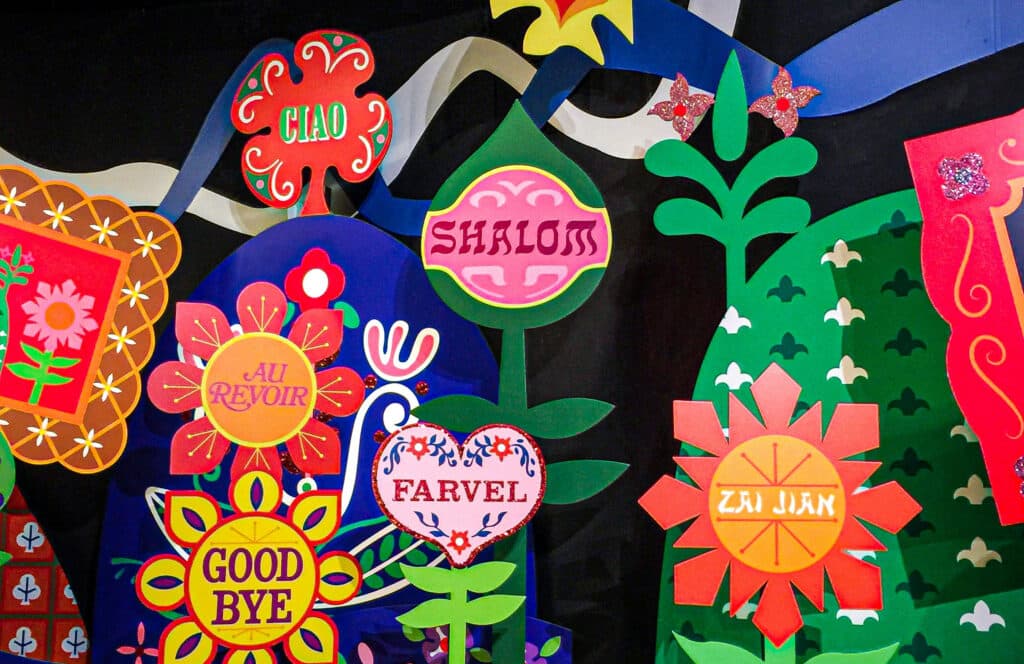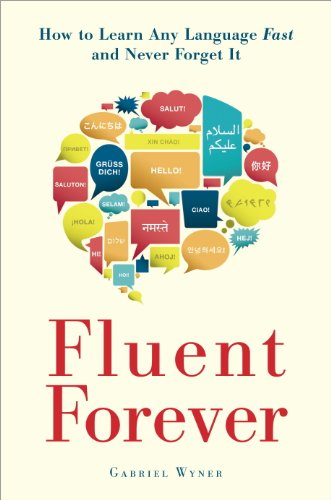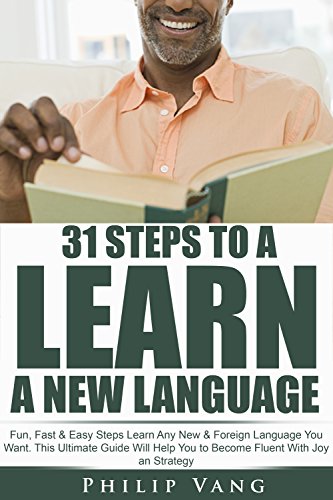
10 Books for Aspiring Polyglots
Being a polyglot would be, well, pretty amazing. Having access to more than a couple languages could really open up your life, from academic study to deep travel.
In this post, I’ll go over 10 books that are absolutely ideal for learning foreign languages and becoming a polyglot.
Consider these polyglot books life hacks for learning new languages. Whether it’s your first or your third language, hearing the stories of other polyglots and training your brain to think a certain way helps immensely when you’re taking on such a big project.
Read on and get ready to be inspired.
Contents
- 1. “Fluent Forever: How to Learn Any Language Fast and Never Forget It”
- 2. “31 Steps to Learn a New Language”
- 3. “The Secrets of Polyglots”
- 4. “Fluent in 3 Months”
- 5. “Learn World Calligraphy”
- 6. “Babel No More: The Search for the World’s Most Extraordinary Language Learners”
- 7. “How to Learn Any Language”
- 8. “The Polyglot Project”
- 9. “The Power of Babel: A Natural History of Language”
- 10. “The Art of Language Invention: From Horse-lords to Dark Elves, the Words Behind World-Building”
- And One More Thing...
Download: This blog post is available as a convenient and portable PDF that you can take anywhere. Click here to get a copy. (Download)
1. “Fluent Forever: How to Learn Any Language Fast and Never Forget It”
Check availability:  Amazon’s Kindle and Barnes & Noble’s Nook
Amazon’s Kindle and Barnes & Noble’s Nook
“Fluent Forever” is the lengthiest book on this list at a whopping 336 pages, but this in-depth guide is well worth the time it takes to read. At 36 years old, the book’s author, Gabriel Wyner, speaks six languages—all self-taught. In this book, Wyner introduces the strategies he’s mastered through learning languages on his own.
The overall focus is to help you formulate a faster way of acquiring a new language, which Wyner does by showing you how to divide and conquer all the aspects of learning a language. For example, flashcards are a common learning strategy—but what’s the most efficient way to make and use flashcards for studying? You’ll find out here.
The book also stresses memory tactics, since the idea of remembering all the grammar and vocabulary that makes one fluent in a language can easily seem overwhelming.
“Fluent Forever” starts with pronunciation and moves on to repetition techniques and exercises, which are based on the spaced repetition learning system (SRS). This is the system that many language learning apps use today, from Memrise to Duolingo. Other apps, like FluentU, use SRS to reinforce what you learn in the authentic videos that serve as contextual lessons. In the case of FluentU, SRS quizzes are used in flashcard reviews and quizzes following videos.
FluentU takes authentic videos—like music videos, movie trailers, news and inspiring talks—and turns them into personalized language learning lessons.
You can try FluentU for free for 2 weeks. Check out the website or download the iOS app or Android app.
P.S. Click here to take advantage of our current sale! (Expires at the end of this month.)
Thanks to “Fluent Forever,” you’ll learn tricks that will help you associate sounds and spelling with images. You’ll really get into the right frame of mind for thinking in a language, rather than thinking first in your native language and then translating into your target language.
Wyner makes a big promise: With his methodologies, you can learn 100 words in a month (that’s more than three words a day!) and this is all laid out for you from the get-go in a chapter on setting your vocabulary goals.
Outside of learning strategies, the book also includes a useful FAQ section about language learning, such as how quickly one can realistically expect to become fluent in a language (spoiler: it depends) and what kind of books and resources you’ll need to move ahead (think workbooks and language groups).
One of the greatest things about this guide is that the writing has a humorous and relatable edge. Wyner begins the book with an anecdote about how he had joined the fencing team in high school to get out of gym class. After that, you feel like you really know and can trust the guy—and you’ll need to trust him to let his great methods get to work on your brain.
In addition to Amazon, this book is available on VitalSource, a place where you can rent or buy e-books and access them on the Bookshelf app (for Kindle, iPad, Android and Chromebook). Their World Languages section is quite robust, so it’s an excellent resource for dedicated language learners to check out.
2. “31 Steps to Learn a New Language”

Check availability: Amazon’s Kindle
The whole title of the book is actually “31 Steps to Learn a New Language: Fun, Fast & Easy Steps Learn Any New & Foreign Language You Want,” and fast it is: In just 44 pages, this motivating book proves to be a great tool for those who want to learn a language for the first time.
Author Philip Veng is like a lesser-known version of do-it-quick, do-it-smart Tim Ferriss (author of “The Four Hour Work Week”), writing about quick routes to accomplishments that are seemingly impossible to the everyday person.
“31 Steps” will help you tackle things like setting goals, making a study schedule and determining your learning style. It lists some great resources for everyday learning (like listening to foreign radio stations and reading children’s books) that you may not have thought of.
Each chapter is quite short—averaging a page and a half—which makes it very digestible for those not looking to read a huge, in-depth book.
3. “The Secrets of Polyglots”

Check availability: Amazon
This useful book is chock full of language learning methods and secrets that are ideal for those who want to add a second (or third!) language to their arsenal but aren’t sure how to start.
Author Konrad Jerzak vel Dobosz clearly understands the unique challenges of learning multiple languages (like mixing up vocabulary for similar languages). If you’re not sure what language you want to tackle yet, this book offers tips that will help you determine what the easiest language for you to study might be based on your learning style.
Dobosz doesn’t leave out the motivational factor that’s so crucial to the serious commitment of language learning, either. His book promotes the many, many benefits of being multilingual, issuing encouraging claims such as improved mental alertness and increased personal confidence.
4. “Fluent in 3 Months”
Check availability: Amazon’s Kindle and Barnes & Noble’s Nook
Yes, the book’s title certainly sounds like a big promise—but with dedicated effort, many language learners have found this book to be true to its word.
Author Benny Lewis was named a 2013 “Traveler of the Year” by National Geographic Traveler magazine, and is a self-taught polyglot who speaks over 10 languages (he knew just one of them in 2003).
The book is divided into two parts: The first goes over how to begin learning a foreign language, and the second part covers how to move into the intermediate and advanced levels.
The beginner section doesn’t scare you away with the more technical aspects of language learning. Instead, it hones in on what you need to learn for your particular situation (are you a tourist or are you moving there for a job?) and gets you talking as soon as possible. The second section stresses grammar mastery and immersion through multimedia, which Lewis believes are better saved for when you’re more comfortable with your new tongue.
Like “The True Polygot,” Lewis’s book also does a good job of pep-talking you through learning a foreign language and debunks common myths, which makes this a great resource for true beginners.
5. “Learn World Calligraphy”
Check availability: Amazon’s Kindle and Barnes & Noble’s Nook
This is the best book I’ve found for taking foreign language learning way beyond speaking—where the emphasis so often lies—and moving it into writing, a key part of learning a language that doesn’t share the same alphabet as your native tongue. It’s also a sure way to impress others, if nothing else—you can learn to write lesser-known scripts like Celtic, Ethiopian and Mongolian. You’ll also find Greek, Russian, Chinese and Arabic, among others.
This beautifully laid out full-color book, which consists of 192 pages of gorgeous calligraphy and step-by-step instructions, is perfect for those who learn visually and by doing.
In addition to teaching you how to write in a foreign language, it also provides a history of each language that brings a new appreciation to why scripts have ended up looking the way they do.
Since books can be limiting when it comes to writing, one extra plus to this book is that you can print out free practice sheets on the author’s site.
6. “Babel No More: The Search for the World’s Most Extraordinary Language Learners”

Check availability: Amazon
This book is a captivating exploration of hyperpolyglots—individuals with an exceptional ability to learn and speak numerous languages. Michael Erard takes readers on a journey to unravel the mysteries of these linguistic prodigies, delving into the scientific and psychological aspects of language acquisition.
The book introduces readers to the lives of remarkable individuals who have mastered an astonishing number of languages, examining the motivations and methods behind their extraordinary linguistic feats. Erard skillfully weaves together anecdotes, research findings, and historical context to offer a comprehensive and engaging narrative. By questioning the limits of language learning, “Babel No More” prompts readers to contemplate the nature of linguistic talent and the possibilities within the realm of multilingualism. This thought-provoking work provides a deeper understanding of the human capacity for language and serves as an inspiration for language enthusiasts and aspiring polyglots alike.
7. “How to Learn Any Language”

Check availability: Amazon
This practical guide distills the author’s extensive language-learning experience into actionable advice. Farber shares insights, strategies, and anecdotes from his own linguistic journey, offering readers a roadmap to becoming proficient in a new language. The book covers a range of languages, emphasizing the importance of self-motivation and personalized techniques. Farber advocates for a hands-on, immersive approach to language learning, encouraging readers to embrace cultural elements and engage with native speakers.
His accessible writing style, coupled with a sense of humor, makes the learning process enjoyable. Additionally, the book provides tips on overcoming common challenges and maintaining enthusiasm throughout the language-learning process. “How to Learn Any Language” serves as both a practical handbook for independent learners and an inspiring testament to the transformative power of language acquisition in broadening cultural horizons.
8. “The Polyglot Project”

Check availability: Amazon and free PDF
This excellent book is a compilation of interviews that offers a fascinating glimpse into the minds and methods of successful polyglots—individuals proficient in multiple languages. The book features in-depth conversations with a diverse array of language enthusiasts, exploring their unique approaches to language learning, motivations, and the impact of multilingualism on their lives.
Each interview provides valuable insights into the varied strategies employed by polyglots, ranging from immersive experiences and self-study techniques to the integration of languages into daily routines.
By delving into the personal stories and learning journeys of these accomplished polyglots, readers gain not only inspiration but also practical tips and perspectives that can inform and enhance their own language-learning endeavors. “The Polyglot Project” serves as both a celebration of linguistic diversity and a valuable resource for those seeking effective and enjoyable ways to master multiple languages.
9. “The Power of Babel: A Natural History of Language”

Check availability: Amazon and UNESCO Digital Library
In this engaging and informative book, linguist John H. McWhorter explores the evolution and diversity of the world’s languages. McWhorter discusses various aspects of language, from its origins to its role in shaping human societies. While not a traditional language-learning guide, “The Power of Babel” provides valuable insights into the nature of languages, the mechanisms behind language change, and the cultural significance of linguistic diversity.
Understanding the broader context of language can enhance one’s appreciation for the intricacies of language learning. McWhorter’s accessible writing style makes complex linguistic concepts accessible to a general audience, making it an enlightening read for language enthusiasts and those interested in the fascinating world of human communication.
10. “The Art of Language Invention: From Horse-lords to Dark Elves, the Words Behind World-Building”

Check availability: Amazon
David J. Peterson offers a unique perspective on language creation, catering not only to linguists but also to language enthusiasts and fantasy world-builders. Peterson, a professional language creator (conlanger) renowned for his work on languages like Dothraki and Valyrian for the TV series “Game of Thrones,” takes readers on a captivating journey into the intricate process of crafting fictional languages.
The book combines linguistic principles with anecdotes from Peterson’s experiences, providing a comprehensive guide to constructing languages that are not only grammatically sound but also culturally relevant. Peterson’s engaging writing style and passion for language invention make the subject accessible to a broad audience. The book serves as an inspiring resource for those intrigued by the intersection of linguistics and creativity, offering a behind-the-scenes look at the linguistic foundations of some of the most iconic fictional worlds in literature and entertainment. Whether readers are aspiring conlangers or simply curious about the art of crafting languages, this book provides a fascinating and informative exploration of a niche yet captivating field.
There’s something for everyone in these polyglot books, so shop around—read some reviews and ratings, and get a feel for what will work best for you!
Download: This blog post is available as a convenient and portable PDF that you can take anywhere. Click here to get a copy. (Download)
And One More Thing...
If you dig the idea of learning on your own time from the comfort of your smart device with real-life authentic language content, you'll love using FluentU.
With FluentU, you'll learn real languages—as they're spoken by native speakers. FluentU has a wide variety of videos as you can see here:
FluentU has interactive captions that let you tap on any word to see an image, definition, audio and useful examples. Now native language content is within reach with interactive transcripts.
Didn't catch something? Go back and listen again. Missed a word? Hover your mouse over the subtitles to instantly view definitions.
You can learn all the vocabulary in any video with FluentU's "learn mode." Swipe left or right to see more examples for the word you’re learning.
And FluentU always keeps track of vocabulary that you’re learning. It gives you extra practice with difficult words—and reminds you when it’s time to review what you’ve learned. You get a truly personalized experience.
Start using the FluentU website on your computer or tablet or, better yet, download the FluentU app from the iTunes or Google Play store. Click here to take advantage of our current sale! (Expires at the end of this month.)








